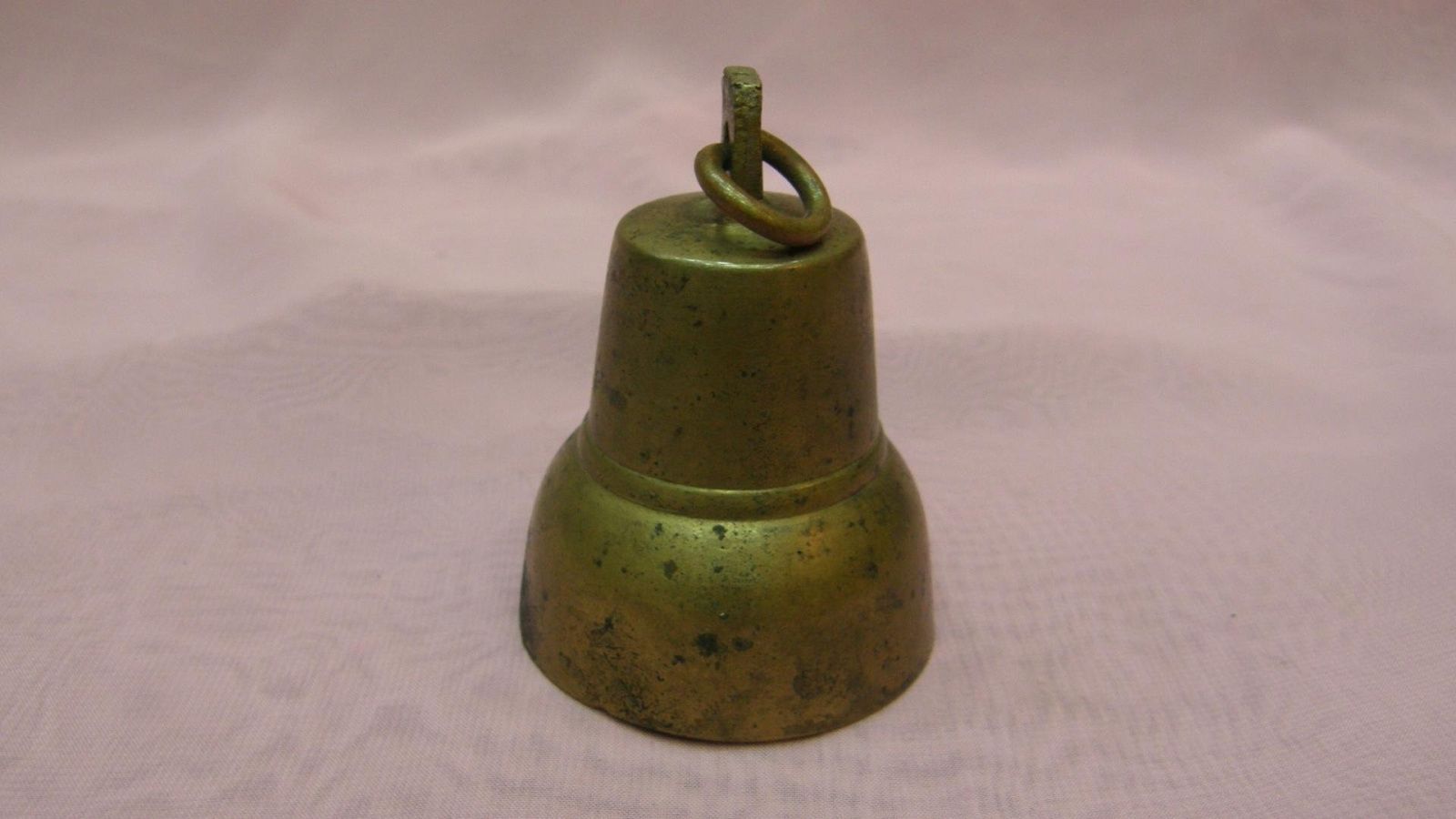Рубрика: Предметы и Факты (+translation) (от 03.02.2023)

Колокола на протяжении веков использовались для обозначения особых случаев, в качестве будильника и как способ созыва людей вместе. Слышите ли вы колокола местной церковной башни, школьный звонок в начале нового дня или эхо колокола на корабле - колокола переносят нас в другое время и место. Самые ранние колокола появились еще в бронзовом веке и были отлиты из комбинации меди и олова. Древние культуры считали, что колокола имеют духовное значение, и первоначально их использовали для отпугивания злых духов. Позже колокола использовались в религиозных церемониях, для обозначения начала дня и предупреждения о приближающейся опасности. Интересно также происхождение самого слова “колокол”. Лингвисты толкуют его как удвоение звукоподражательного корня. А. Н. Давыдов, например, считает, что видимо, следует вспомнить традиционное использование колокола при пастьбе: слушая звук ботала, привязанного к шее животного, легко заметить, что при движении лошади, коровы или овцы, наиболее часты именно двойные удары. Звук, которых близок к звукоподражанию “кол”.
Однако сегодня поговорим об одном интересном русском явлении – поддужный колокольчик. С конца XVIII до прошлого столетия колокольчики были атрибутом как почтовых, так и частных троек. Однако изначально они предназначались исключительно для почтовых трактов и исполняли роль своеобразного сигнального средства, извещая о прибытии курьерской повозки. Обывателям так нравился мелодичный и праздный звук, что вскоре тройки с колокольчиками были спутниками практически всех праздничных событий в крестьянской жизни.
Неразбериха с колокольчиками дошла до такой степени, что почтовые отделения начали обращаться непосредственно к сенату, в жалобах говорилось что обыватели ездят во все дни с колокольчиками и ямщики на станциях, когда приходит почта, часто бывают не готовы, думая, что едет какой-то обыватель с колокольчиком. Многочисленные жалобы привели к тому, что 18 декабря 1836 г. вышло постановление Сената, в котором указывалось: “Запретить употребление колокольчиков всем тем, которые едут на собственных или вольнонаемных лошадях”. в 1860 г. Снова был введен строгий запрет употреблять поддужные колокольчики не на почтовых лошадях. Представленный вам поддужный колокольчик был привезен из экспедиции на Северную Сосьву и датируется серединой прошлого столетия.
#Колокол #История
Bells have been used for centuries to mark special occasions, as an alarm clock, and as a way to bring people together. Whether you hear the bells of a local church tower, the school bell at the start of a new day, or the echo of a bell on a ship, bells transport us to another time and place. The earliest bells date back to the Bronze Age and were cast from a combination of copper and tin. Ancient cultures believed that bells had spiritual significance, and originally, they were used to ward off evil spirits. Later, bells were used in religious ceremonies, to mark the beginning of the day and to warn of approaching danger. The russian origin of the word "Kolokol" itself is also interesting. Linguists interpret it as a doubling of the sound-suggestive root. A. N. Davydov, for example, believes that one should recollect the traditional use of the bell for grazing: listening to the sound of the bells, tied to the neck of the animal, it is easy to notice that when a horse, cow or sheep is moving, the double beats are most frequent. The sound of which is close to the sound imitation "kol".
However, today we will talk about one interesting Russian phenomenon - the bell-ringer. From the end of the XVIII century to the last century bells were an attribute of both postal and private troikas. However, originally, they were intended exclusively for the postal routes and played the role of a peculiar signal tool, announcing the arrival of the courier wagon. The common people liked the melodious and idle sound so much that soon troikas with bells were companions of almost all festive events in peasant life.
The confusion with bells reached the point where post offices began to appeal directly to the Senate, complaining that the philistines rode on all days with bells and the coachmen at the stations, when the mail arrived, were often unprepared, thinking that some philistine with a bell was on his way. Numerous complaints led to the fact that on December 18, 1836 a decree of the Senate was issued, which stated: "To prohibit the use of bells to all those who ride on their own or freemen's horses." in 1860. Again, a strict prohibition was imposed on the use of winding bells not on postal horses. The bell-bell presented to you was brought from an expedition to the Northern Sosva and dates back to the middle of the last century.
Однако сегодня поговорим об одном интересном русском явлении – поддужный колокольчик. С конца XVIII до прошлого столетия колокольчики были атрибутом как почтовых, так и частных троек. Однако изначально они предназначались исключительно для почтовых трактов и исполняли роль своеобразного сигнального средства, извещая о прибытии курьерской повозки. Обывателям так нравился мелодичный и праздный звук, что вскоре тройки с колокольчиками были спутниками практически всех праздничных событий в крестьянской жизни.
Неразбериха с колокольчиками дошла до такой степени, что почтовые отделения начали обращаться непосредственно к сенату, в жалобах говорилось что обыватели ездят во все дни с колокольчиками и ямщики на станциях, когда приходит почта, часто бывают не готовы, думая, что едет какой-то обыватель с колокольчиком. Многочисленные жалобы привели к тому, что 18 декабря 1836 г. вышло постановление Сената, в котором указывалось: “Запретить употребление колокольчиков всем тем, которые едут на собственных или вольнонаемных лошадях”. в 1860 г. Снова был введен строгий запрет употреблять поддужные колокольчики не на почтовых лошадях. Представленный вам поддужный колокольчик был привезен из экспедиции на Северную Сосьву и датируется серединой прошлого столетия.
#Колокол #История
Bells have been used for centuries to mark special occasions, as an alarm clock, and as a way to bring people together. Whether you hear the bells of a local church tower, the school bell at the start of a new day, or the echo of a bell on a ship, bells transport us to another time and place. The earliest bells date back to the Bronze Age and were cast from a combination of copper and tin. Ancient cultures believed that bells had spiritual significance, and originally, they were used to ward off evil spirits. Later, bells were used in religious ceremonies, to mark the beginning of the day and to warn of approaching danger. The russian origin of the word "Kolokol" itself is also interesting. Linguists interpret it as a doubling of the sound-suggestive root. A. N. Davydov, for example, believes that one should recollect the traditional use of the bell for grazing: listening to the sound of the bells, tied to the neck of the animal, it is easy to notice that when a horse, cow or sheep is moving, the double beats are most frequent. The sound of which is close to the sound imitation "kol".
However, today we will talk about one interesting Russian phenomenon - the bell-ringer. From the end of the XVIII century to the last century bells were an attribute of both postal and private troikas. However, originally, they were intended exclusively for the postal routes and played the role of a peculiar signal tool, announcing the arrival of the courier wagon. The common people liked the melodious and idle sound so much that soon troikas with bells were companions of almost all festive events in peasant life.
The confusion with bells reached the point where post offices began to appeal directly to the Senate, complaining that the philistines rode on all days with bells and the coachmen at the stations, when the mail arrived, were often unprepared, thinking that some philistine with a bell was on his way. Numerous complaints led to the fact that on December 18, 1836 a decree of the Senate was issued, which stated: "To prohibit the use of bells to all those who ride on their own or freemen's horses." in 1860. Again, a strict prohibition was imposed on the use of winding bells not on postal horses. The bell-bell presented to you was brought from an expedition to the Northern Sosva and dates back to the middle of the last century.
